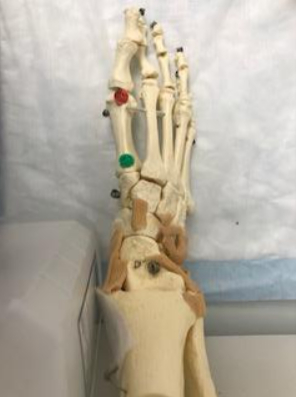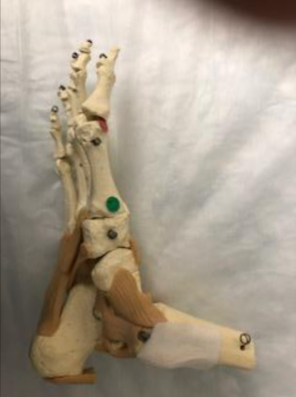
Part 1: Plantar Fasciitis
Written by Dr. Tucker
Here at Dr. Tucker PRP and Prolotherapy we see many patients with pain in the soles of their feet. Ultimately, they are diagnosed with Plantar Fasciitis. This is a condition where the strong connective tissue on the soles and arches of the foot is painful and in spasms. Some of the therapies they try include, icing the foot, massage, arch supports, strengthening, and various gizmos to roll on the foot in order to help with the spasm. But these are all only temporary solutions that help alleviate the pain and they will not remedy Plantar Fasciitis, permanently.
This begs the question, what is the underlying cause of this condition? Once again, it is the tendons and ligaments. As we age, with years and years of pressure coming down on the horizontal foot, the tendons and ligaments supporting the arch above the plantar fascia begin to weaken and fray. Consider the cases of plantar fascial rupture. This is due to the same process which has become so extensive that the fascia tears.
In people with hypermobility and Ehlers Danlos Syndrome, it is not “wear and tear” as much as over stretching. Arch supports are vital in this situation. It is not a condition that will benefit from barefoot running or barefoot shoes.
In addition, strengthening the ligaments and tendons will support the arch, as well as the plantar fascia, and solve the underlying problem. This is where PRP and dextrose prolotherapy come in. Proliferative treatments with PRP or dextrose will completely take care of the problem. Done! Most of the time, this condition requires PRP rather than dextrose because it is much stronger, it will solve the problem quicker and require fewer treatments, so you can get back on your feet. If you’d like to set up a consultation, please give our office a call at (415) 506-4907. See you on the trails!
Part 2: Bunions
When I was in my 30s and began noticing bunions, I could not understand why I had them. I went to a doctor who told me that it was from wearing poor footwear, specifically high-heeled shoes. But, I never actually “wore” high-heeled shoes, maybe on special occasions, but not on a daily basis.
What Causes Bunions?
Now, our understanding of bunions is so much clearer. If we address the problem with PRP, we can save years and years of pain, not to mention surgery. Here the problem is in the ligaments supporting the arch. In the first photo below, we are looking at the foot from above, and the red dot is the joint of the great toe going toward the small toe. The green dot is the bone beneath moving in the opposite direction. These changes happen because the ligaments supporting the arch of the foot (take a look at the second photo, do you see all the ligaments?) have become worn and are not able to keep the arch nice and strong.
As result, the bones in the midfoot flatten down when we walk, and a huge amount of weight comes down onto that 1st toe. You may be able to see that the 1st toe is pointing outward on your own foot, but what you don’t see is that the bone before it, points inward. In both cases, it is because of a loss of integrity of the arch. Just a note, sometimes there are a lot of big bony changes on the 1st toe. This is an extra bone formation that happens when excessive forces come down on a joint.
Bunion Treatment
PRP and dextrose prolotherapy when done by a person skilled in the treatment of the ligaments should be done around those two joints as well as along the ligaments supporting the arch. The improvement is remarkable. Life changing! And you know what? That doctor was right, it was poor footwear. What I needed was arch supports and shoes with a wide-toe box. (And PRP!) Give us a call when you are ready to have relief from your painful bunion at (415) 506-4907.



Recent Comments